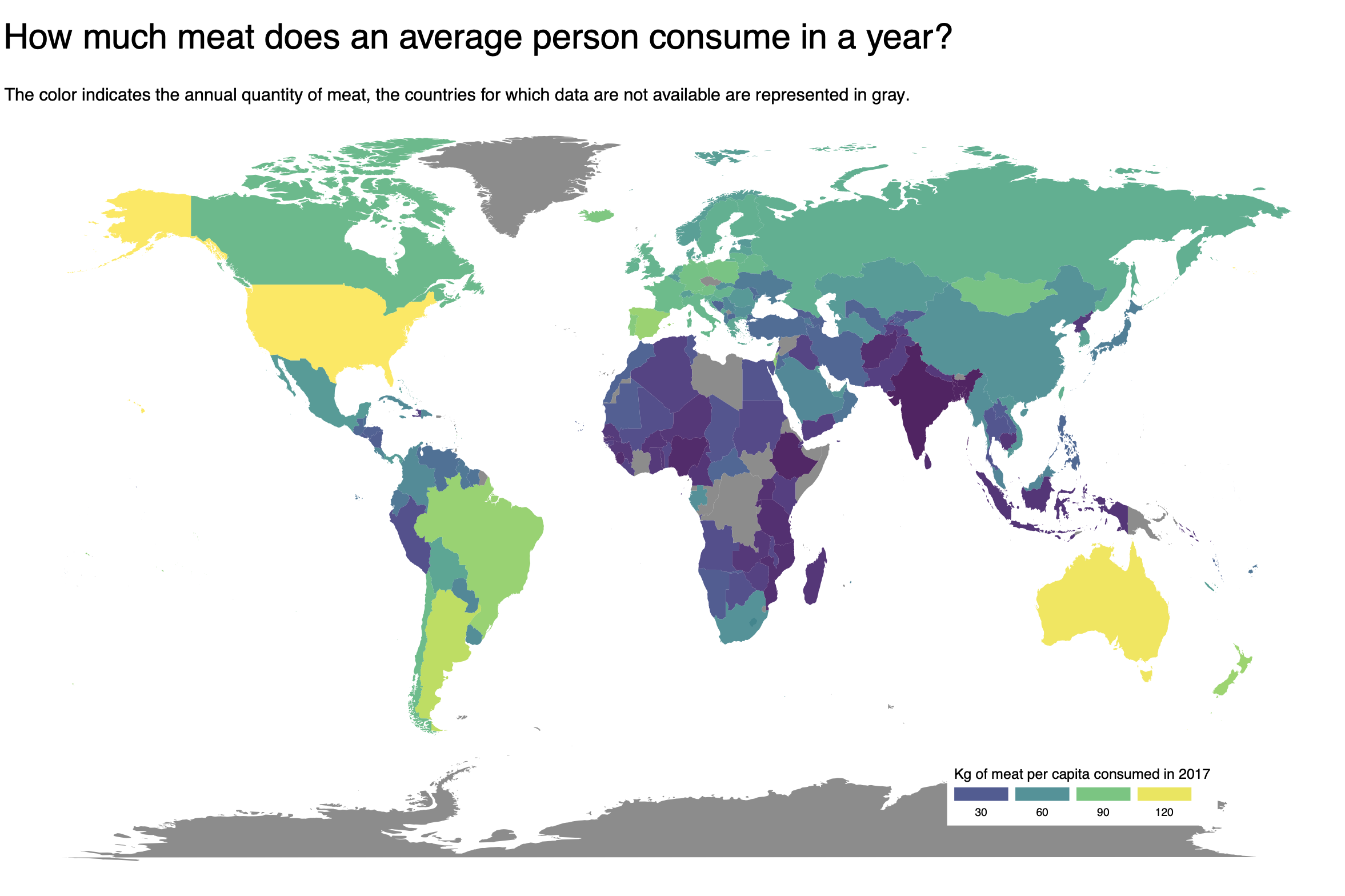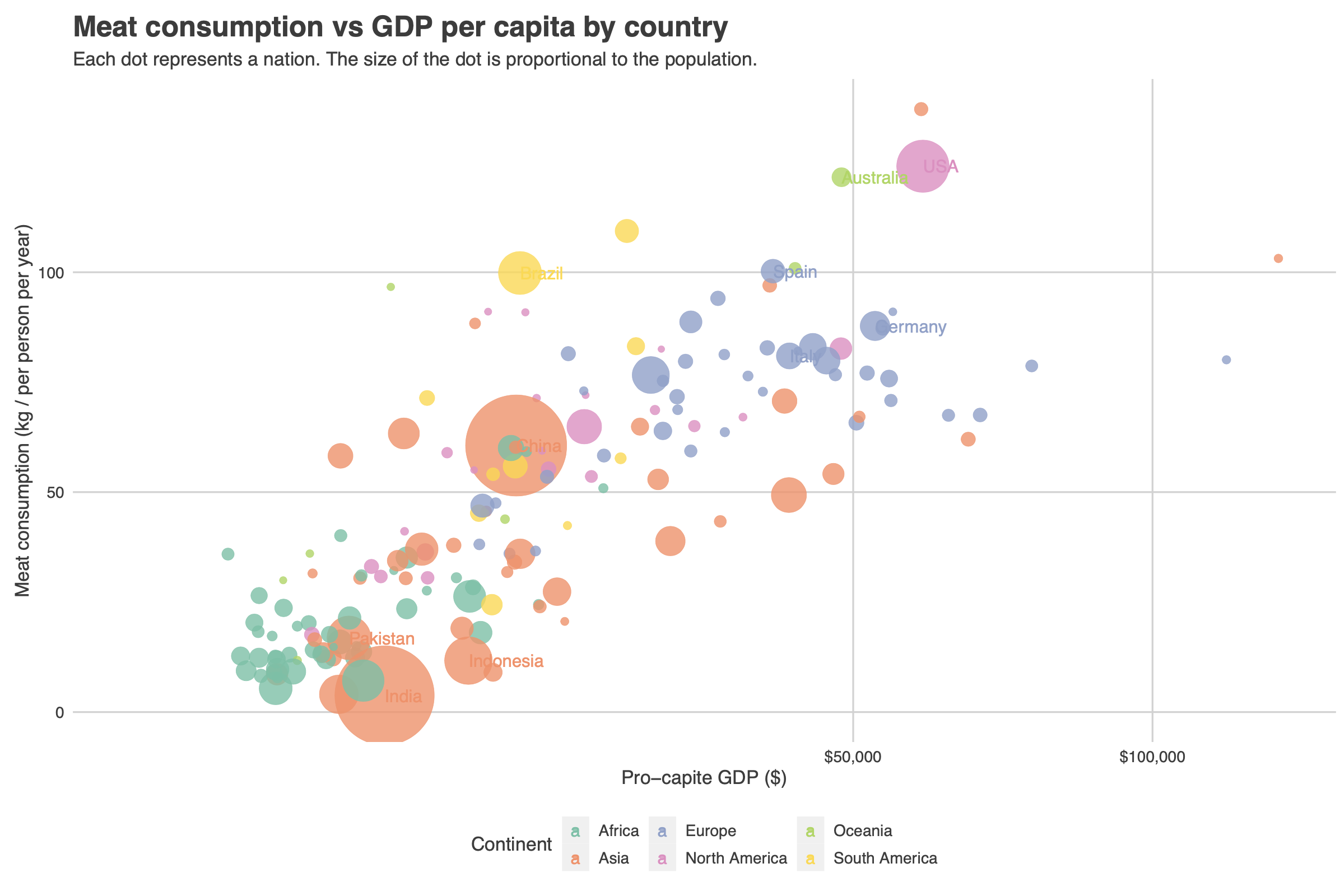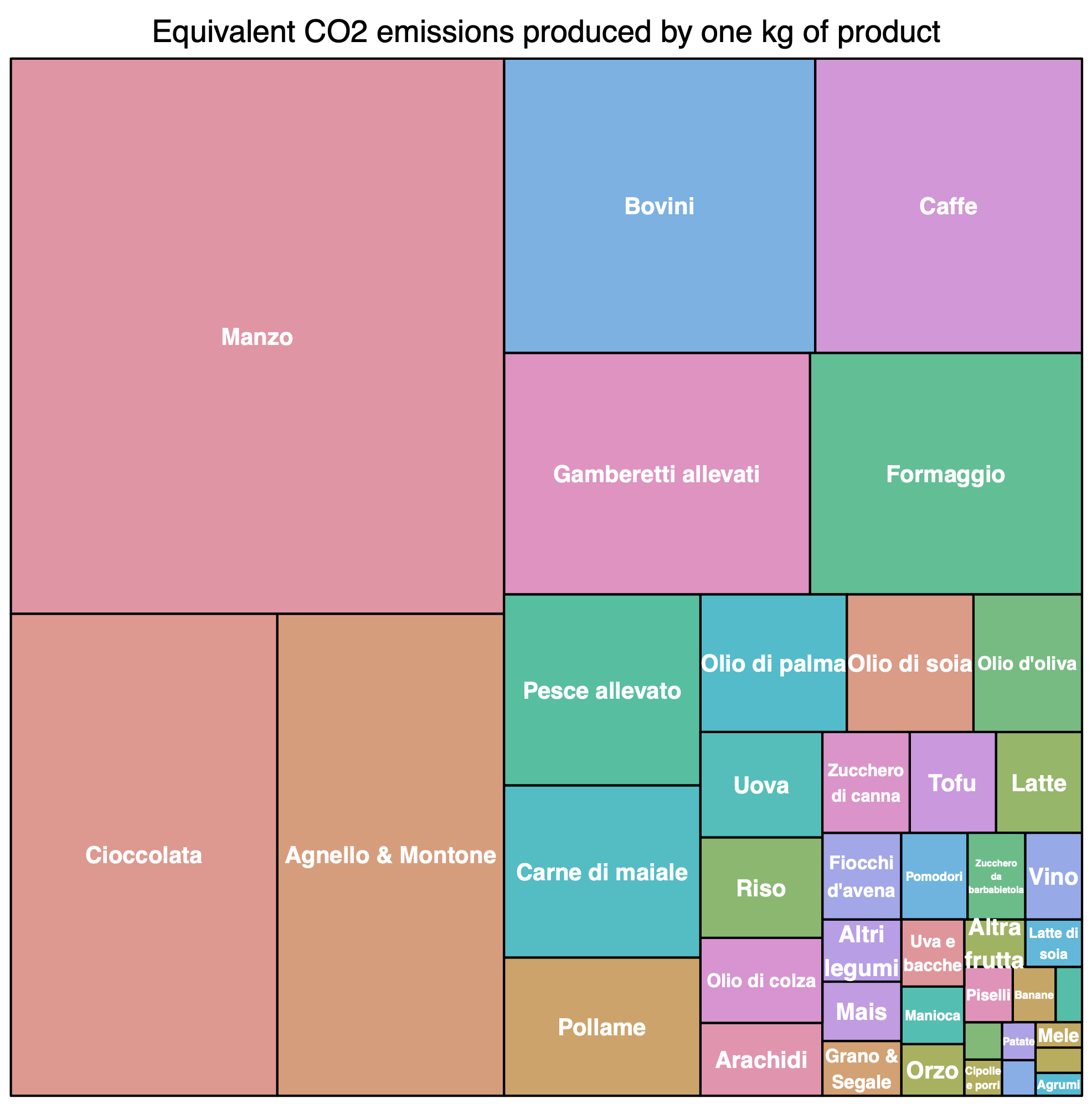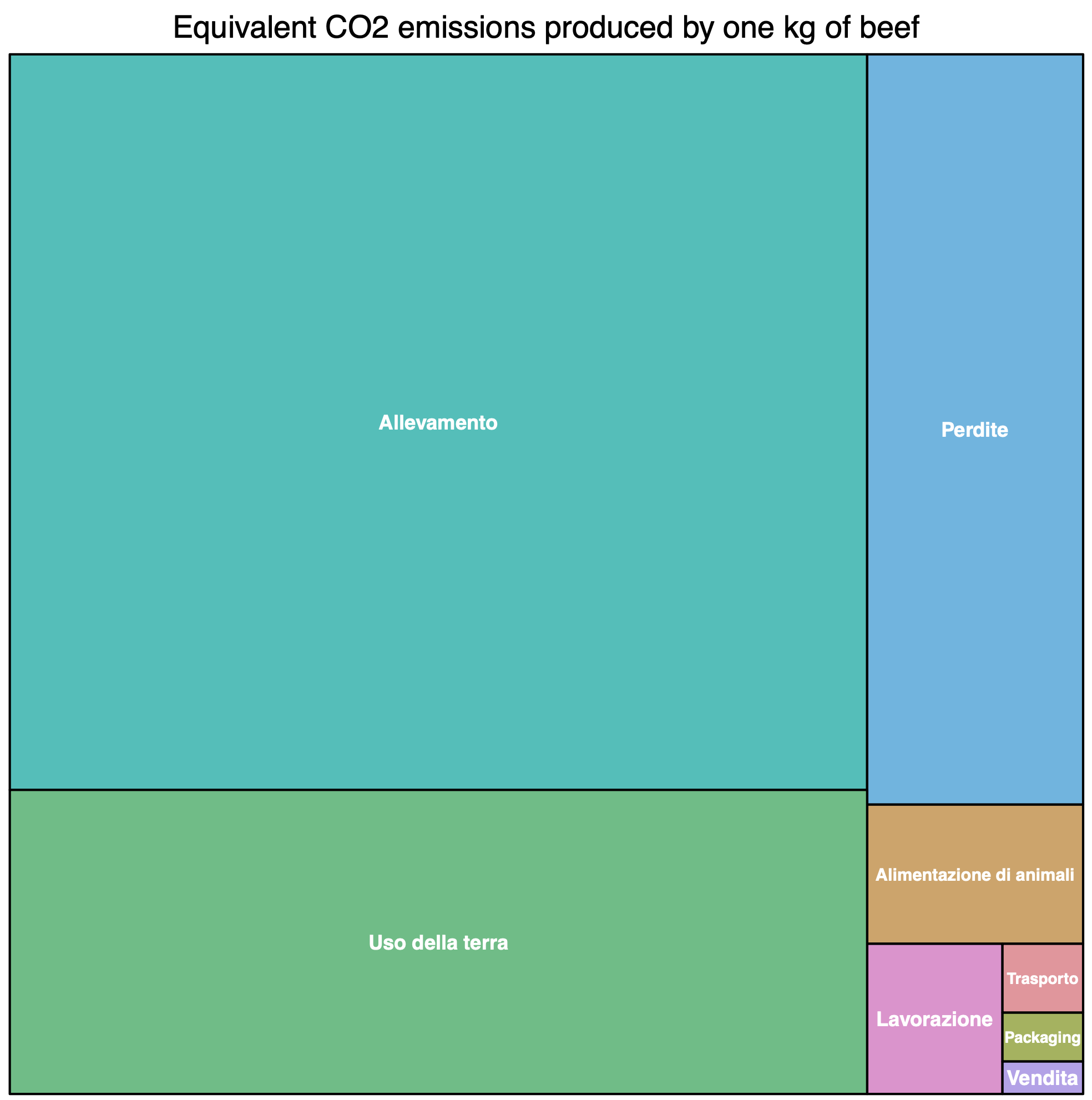If you want to download the full italian version of the report click here.
Meat has been an integral part of the human diet for centuries. However, in recent years,
there has been a growing debate about the potential negative effects of meat consumption on
human health and the environment. This report aims to address three main questions:
- How has meat consumption increased over the years, and which countries have experienced significant or minimal growth? What could be the underlying reasons for these trends?
- How does a nation's wealth influence meat consumption, and what is the correlation between these two variables?
- What is the environmental impact of the meat supply chain ?
Data and Methodology
The data used for this report was sourced from ourworldindata.org, a website containing hundreds of readily available datasets under a Creative Commons license. The following is a brief description of the data used:
- Per capita meat consumption by country, measured in kilograms per person per year. The food intended for human consumption is indirectly derived from all other uses. The dataset covers the period from 1961 to 2017.
- Per capita meat consumption by country, population data, and GDP per capita for each country on an annual basis.
- Data on greenhouse gas emissions in CO2 equivalents per kilogram of product, divided by each phase of the supply chain (2018).
Increase in per capita meat consumption: a growing trend
Global meat consumption per capita has been on the rise. According to the analysis conducted using R, per capita meat consumption increased by 69% from 1961 to 2017. The choropleth map illustrates the countries with the highest per capita meat consumption in 2017, with African nations and India displaying relatively low consumption due to cultural influences.

Correlation between meat consumption and GDP per capita
Meat consumption has significant economic implications at the national level. There is a strong correlation between meat consumption and a nation's Gross Domestic Product (GDP). The scatterplot demonstrates the positive correlation between these two variables. Countries with higher GDP tend to have higher per capita meat consumption, while lower-income countries exhibit lower consumption levels.

The environmental impact of meat production
Meat production has a significant environmental impact , particularly in terms of greenhouse gas emissions. The meat industry contributes to a substantial amount of these emissions, which contribute to climate change. The treemap highlights the CO2 equivalents produced by various food items, with beef and lamb accounting for over 40% of emissions.

Furthermore, a breakdown of the emissions associated with beef production reveals that the majority of greenhouse gas emissions (56%) come from livestock rearing rather than transportation (0.5%). This finding emphasizes the importance of considering dietary choices, such as reducing meat consumption, to have a significant impact on emissions.

Conclusions
The ongoing debate surrounding meat consumption's effects on health and the environment has shed light on important considerations. The report demonstrates the global increase in per capita meat consumption, the correlation between meat consumption and a nation's wealth, and the environmental impact of the meat supply chain. It also suggests alternative protein sources with lower environmental footprints, such as insects and algae, as potential substitutes for meat. By making informed dietary choices, individuals can contribute to mitigating the environmental impact associated with meat production.